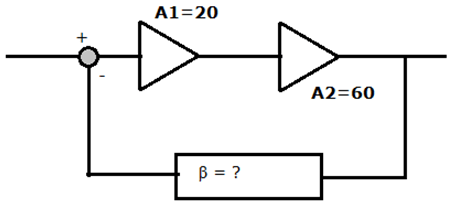Test: Effects of Feedback - Electronics and Communication Engineering (ECE) MCQ
10 Questions MCQ Test GATE ECE (Electronics) Mock Test Series 2025 - Test: Effects of Feedback
Return ratio for a circuit is 220. What is the amount of feedback, correct up to 2 decimal places?
Consider the given diagram. Loop gain is 19. Consider closed loop gain is 50. Find the output without any feedback when input is 5.


| 1 Crore+ students have signed up on EduRev. Have you? Download the App |
Find the relative change in gain with negative feedback given that return ratio is 24, and feedback factor is 3, when the change in open loop gain is 2.
Relative change of gain of feedback amplifier is 0.05. Also, loop gain is 9. Find desensitivity?
Circuit P has desensitivity 20, circuit Q has sensitivity 0.1 and circuit R has desensitivity 40. Which of the following is more stable in gain?
Consider the total harmonic distortion of a closed loop system is 5%. Distortion without feedback is 10%. Calculate the sensitivity of closed loop system.
For the system shown gain with feedback is 200. Find feedback factor.

Feedback can cause a system that is originally stable to become___________
|
25 docs|263 tests
|
|
25 docs|263 tests
|

















